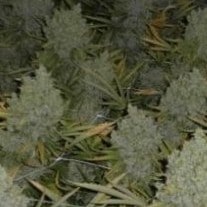It may seem that growing marijuana outdoors is fraught with challenges and risks which is why some growers prefer to grow indoors. But with some preparation and effort, outdoor growing can be more rewarding and satisfying.
While it may seem like growing indoors is more private, this is not necessarily true. The same goes for the yield you can expect from grow rooms. Sometimes, even when a grower can control all the variables, it’s still difficult to get a bountiful harvest. So, even though indoor growing sounds convenient, it still has its drawbacks.
Outdoor growing, on the other hand, has many unexpected advantages. Here are some reasons why you should consider growing weed outside.
Ready to start growing marijuana outdoors today? Find high-quality weeds seeds in our marijuana seed bank.
The benefits of growing marijuana outdoors
Despite the increased control on the growing variables in an indoor setup, growing marijuana outdoors still has many advantages – to the environment, the plant, and the grower.
Reasons to Grow Marijuana Outdoors
There are many reasons to grow marijuana outdoors, here are five of them.

Environment-Friendly
With the popularity of indoor growing comes the excessive consumption of energy. Grow rooms require lights, ventilation systems, and other equipment that eat up a lot of electricity.
In California, estimates show that a single household uses up as much as 8% of energy growing marijuana. That’s roughly using 200 pounds of coal to produce a pound of weed.
Growing in California
In contrast, outdoor growing needs only the sun, air, and water to thrive. It does not produce any carbon footprint, and it even contributes to the dynamics of the ecosystem. So, if we want to save the planet, the outdoor option is the better choice.
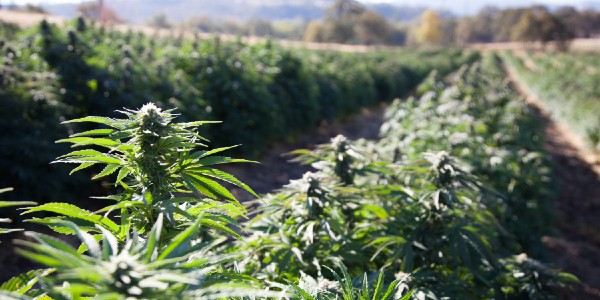
High-Quality Buds
Blessed by the sun, natural soil, and fresh air, outdoor cannabis develops a distinct flavor. It is often nothing like the ones grown indoors. As such, some weed enthusiasts even swear that they can taste the earthy essence in strains grown outdoors.
Aside from its pleasant aroma, a home grower knows they are producing top-notch buds merely because they are the ones tending it. Poor quality weed is harsh to smoke and may give a bad headache instead of a good high. Therefore, it’s way better to plant our own for vibrant green buds that are safer and provide more satisfaction.
Incredibly Cheap and Effortless
One of the obvious benefits of growing weed outdoors is the free sun. The plants get unlimited sunshine that is many times better than grow lights. Also free are the infinite supply of fresh air, carbon dioxide, and rainwater. As we know, these are all the elements that the hardy marijuana plant needs to flourish.
Growing outdoors also doesn’t require that much expertise. You only need good seeds and the proper care to germinate them. Once they sprout, they can technically grow by themselves, but, of course, you’re going to do more than that. Even with the least amount of effort, however, you’re going to get something.
Larger Cannabis Yields
Growing outdoors will most definitely lead to huge buds and overall higher yield. With the help of the sun and carbon dioxide, the plants will grow extra-large leaves. This, in turn, will help accumulate more energy to produce huge buds.
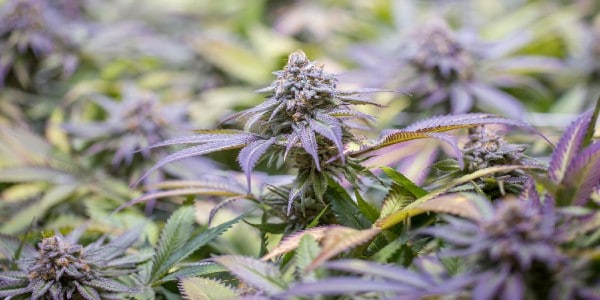
Assuming that we have a secure location, a plant can grow larger than 180 cm. With this size, it can potentially produce around 500 g of dried buds. With just 5 to 7 plants that are this size, you have a year’s worth supply of high-quality weed. For patients who use marijuana for medication, this type of yield is especially useful. Obviously, growing plants that are this enormous would be impossible indoors.
Safer for the Grower
As we know, security is the main issue when growing cannabis outdoors. Again, this is the primary reason why cannabis cultivation shifted indoors. However, a suitable outdoor location can be even more secure than keeping the plants inside our homes.

Why is this the case? Ownership of an outdoor garden is tougher to trace than an indoor one. You can always deny it if caught, preventing the worry of being charged with a crime. You cannot do that as easily when growing indoors.
These reasons show how growing outdoors is better for both the plant and the growers. If being cheaper, more relaxing, and safer isn’t enough to convince you, being incredibly easier might. Just like any other gardening skill, you need patience and knowledge to be successful, but once you do, growing outdoors can be a walk in the park.
Score great savings on your favorite strains when you avail of our seed deals. Buy 10 and get 10 seeds for free!
Getting Started Growing Outdoors
Now that you know why you should grow marijuana outdoors, it’s time to learn how to get started.
Depending on where you live, you can plant marijuana outside in the late spring all the way through to the middle of July. Planting earlier basically ensures a much bigger plant. Starting late can prevent plants from getting too large before flowering begins.
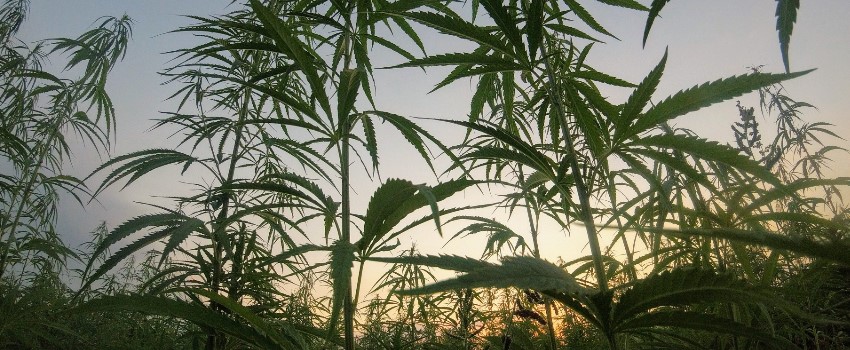
Factors to consider when growing cannabis outdoors
When growing marijuana outdoors, you must account for the impact of latitude on day length. There are also ways you can try to maximize plant growth and yield.
The plants can be grown directly in the ground where they generally do very well, or they can be grown in five- to twenty-gallon containers. Plants growing in larger containers will naturally produce more bud.
The lengthening nights of the late summer trigger the plant’s flowering stage. Some varieties will cease growing vegetatively almost instantly, but others could continue growing and quadruple in size. It generally takes between 55 and 70 days for the buds to mature after the plants have started flowering. When the plant starts flowering, switch the fertilizer to a bloom formula so that the plants will acquire nutrients needed for larger buds.
Marijuana plants switch to flowering when the uninterrupted dark period passes the minimum amount of time. This period varies by variety and is usually between 8 and 11 hours. If your plants respond to a shorter dark period, they are early season varieties. Plants that respond to a longer dark period are, of course, late-season varieties. Outdoor plants with a short dark period are best suited to higher latitudes.
The effect of latitude

When growing marijuana, you must account for the impact of latitude on day length. For example, June 21 is the longest day and shortest night of the year. As you can see, Boston’s night length is 1 hour and 12 minutes shorter than San Diego’s.
| San Diego | St. Louis | Boston |
| Dusk to dawn lasts 8 hours and 44 minutes. | Dusk to dawn lasts 8 hours and 3 minutes. | Dusk to dawn lasts 7 hours and 32 minutes. |
Early season varieties growing at lower latitudes (such as San Diego) will be induced to flower early in the season and will remain small even during the maturation process. The generally shorter nights during the summer at high latitudes (such as Boston) give the plants a chance to grow before they flower. A late-season variety growing in the north might trigger late in the season but won’t get a chance to develop mature buds. It will not trigger during the early summer in low latitudes, but it will flower earlier as a result of the longer nights and milder climate.
Marijuana’s different flowering habits and the varieties that produce them have led to many strategies for growing. In northern areas, short-season varieties are needed to ensure that plants mature before the weather turns.
By contrast, gardeners in the south grow long season varieties during the summer that ripen in the fall. Certain short season varieties will start to flower soon (a month or so after the summer solstice) and will be ready for harvest in early autumn.
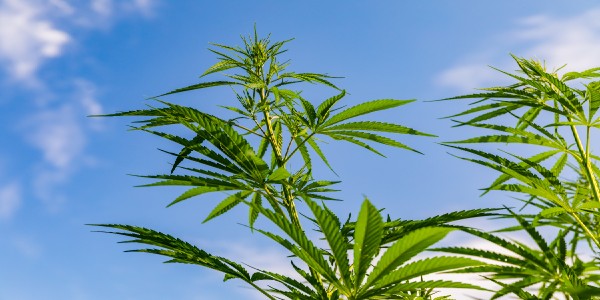
If short-season varieties are not provided with extended exposure to daylight, they will not grow large enough to produce much of a yield. Long season varieties can be planted in the fall to mature a few months after planting.
In areas that tend to stay warm throughout the year, sativas and sativa-indica varieties can be planted in the fall. They will continue growing into the winter as they flower and will be ready in about 70 to 80 days after planting.
Understanding what you should grow in your climate is one way to enjoy the higher yield potentials of outside grows. Here are some more tips to help you successfully grow outdoors:
Pruning
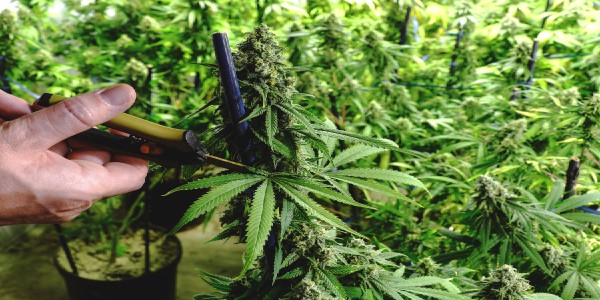
Pruning is sometimes needed to keep marijuana plants at a manageable size. When the main stem is cut, the lower branches increase in size, and the plant grows several other strong branches.
When these are pruned, the plant becomes bushier and puts less emphasis on growing taller. Plants with the main stem clipped will produce greater yields than unclipped plants.
Cannabis Fertilizer
Fertilize the plant with vegetable fertilizer mix or liquid, or use a hydroponic, vegetative formula to maximize plant growth and yield. Follow directions precisely or use less fertilizer than suggested. Never use more than the recommended amount as it can throw chemical balances out of order.
Triggering the flowering stage
Regardless of the latitude you live in, you can trigger the flowering stage at any time during the summer by covering the plants for a portion of each day so that the “night” period is lengthened. For example, if dusk is at 8:00 p.m., the garden needs to remain enshrouded in darkness until 8:00 a.m. the next morning. With an opaque cover over the garden during the 12-hour dark period, the plants will only receive 12 hours of light every day and will thus be triggered into flowering.
Around week six of flowering, you will begin to notice that the buds are becoming more odoriferous by the day. The non-pollinated flowers are starting to mature, and, in two or three weeks, the flowers will be ripe and ready. This can be observed when the stigma dries, the ovary swells, and the capitate trichomes swell with resin and fluoresce. Buds that get the most light will ripen first in most cases. Remove them but leave the unripe buds to continue ripening. They will be ready within 10 days.
Know the perfect time to reap your cannabis plants with my free mini harvesting guide!
Harvest Guide
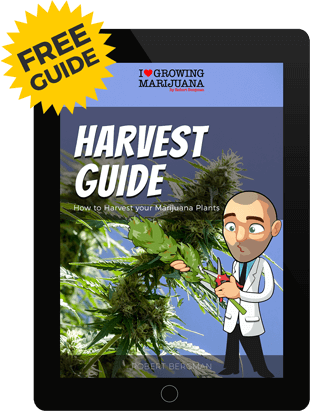
- Time your harvest for Perfect Taste
- Get THC levels for a Perfect High
- Don’t waste any Precious Bud
Error: Contact form not found.
Stealth Growing
In many areas, outdoor growing must stay discrete. The best way to do this is focusing on finding a private spot. It should have access to water and at least six hours of direct sun each day. If using your backyard, install a tall privacy fence and keep dogs in your yard. The dogs will keep cats and rodents away.
Sometimes marijuana plants are hard to hide, but there are many ways to disguise them. To keep plants small, choose autoflowering strains. You can also plant them next to bright flowering plants, large bushy trees or trim the leaves so that they do not look like weed plants. To hide the smell, choose low-odor strains or plant next to fragrant flowers.
How to grow the best outdoor plants

It is very easy to grow marijuana outdoors, but with a little extra effort, it can produce far superior results than other methods. These practices will help you grow the best plants.
Watch the sun, look for the water
Some growers like to start their plants in pots and then move them to the ground. When selecting a transplant location, consider how well it provides for the needs of your plants.
Only at the equator is the sun directly overhead, so any latitude north of that places the sun in the southern sky; an ideal transplant site would be a low, bald south-facing ridge that is open to the east and west and bathed in sunlight from dawn to dusk.
Grow healthy plants that will thrive outdoors. Explore our collection of weed seeds that love a lot of sun!
Water is an important consideration. I have been lucky enough to grow on rich swampland knolls where a hole dug more than a foot struck water, and plants more than a foot tall needed no watering for the entire summer. Streambanks, lake and pond shorelines and dry marshes can be great transplant locations, although it might be necessary to clear an opening to the sky from cattails and other underbrush.
One problem with open wetlands is that areas like ponds, lakeshores, and riverbanks are favored by wandering anglers and explorers. While not everyone will recognize cannabis growing in a natural environment, the few who do will definitely bother your crop. You’ll also need to be concerned about providing a solid footing for your plant. A growing marijuana plant needs this for its roots to get a solid grip.
Planters vs. directly growing in the ground
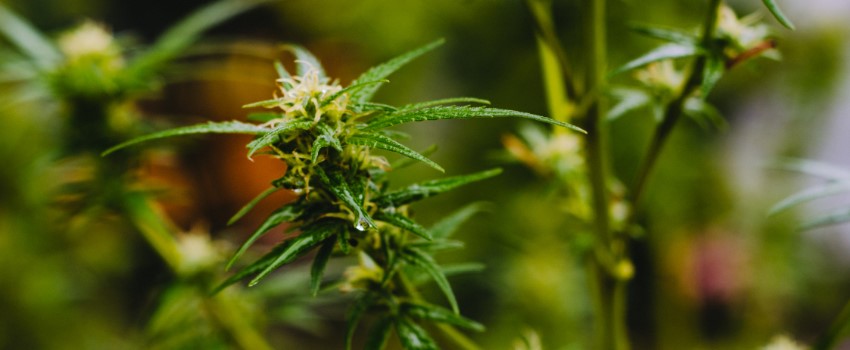
Plants growing free in the earth seem to always achieve more size, with greater health, and lusher foliage, probably because no environment is more natural than nature, not even where short growing seasons don’t allow time for maximum growth. One downside is that plants outside are subject to a range of dangers not encountered by closet growers. Indoor growers rarely face tiny red spider mites that surround and kill the leaves of outdoor plants, but they, too have their concerns.
If your growing pots are large enough, there is no need to transplant. As long as a location provides maximum sunlight, plants are watered—sometimes up to a gallon per plant per day if the harvest angels smile on you—and plants are not eaten by animals and insects, a potted plant with at least a foot of growing room for its roots in all directions can be grown to fruition.
Ideally, you’ll use 5- and 6-gallon plastic buckets – the type used for everything from drywall mud and restaurant pickles to carry-kit/seat combos that have become popular with deer hunters. These are relatively easy to carry by their wire-bail handles, even when weighted with moist dirt and provide ample water storage for the hottest and dryest places while leaving enough root space to satisfy the largest cannabis plant.
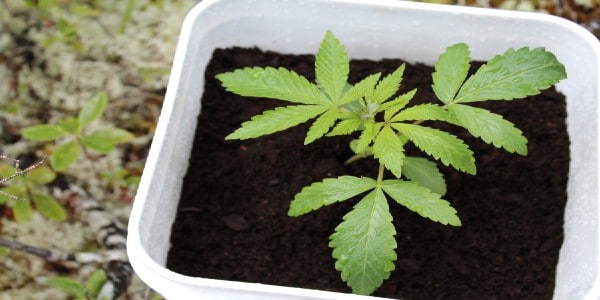
Another advantage is that some of the most willing pot-plant- eaters are unable to climb the smooth sides of a plastic bucket. A downside is that many buckets are brightly colored and must be spray-painted, draped with camouflage mosquito netting, partially buried, or otherwise covered with debris and materials that make them hard to notice.
Make Sure Your Plants Can Get Darkness
When growing in a backyard, it is for your plants to fail to receive a proper light/dark ratio. It is important to remember that the access to darkness is just as important as access to the sun. To ensure darkness, do not place your plants near windows. The light from your house will interrupt the dark period. If your property has street lighting, consider covering your plants at night.
Growing outdoors can be beneficial for a large number of people as long as you plan ahead and stay safe. Plus, it is better for the environment and can produce higher yields. If you’ve been considering growing outdoors purchasing some high-quality seeds and learning everything you can about growing marijuana is a great place to start.
FAQs About Growing Marijuana Outdoors
Among the advantages of growing marijuana outdoors are being environment- friendly, ability to grow high-quality buds, it’s cheaper compared to growing indoors and larger cannabis yields.
It generally takes between 55 and 70 days for the buds to mature.
Cannabis plants can be grown directly in the ground where they generally do very well, or they can be grown in five- to twenty-gallon containers. Plants growing in larger containers will naturally produce more buds.
The post Why You Should Grow Marijuana Outdoors (and how) appeared first on I Love Growing Marijuana.

